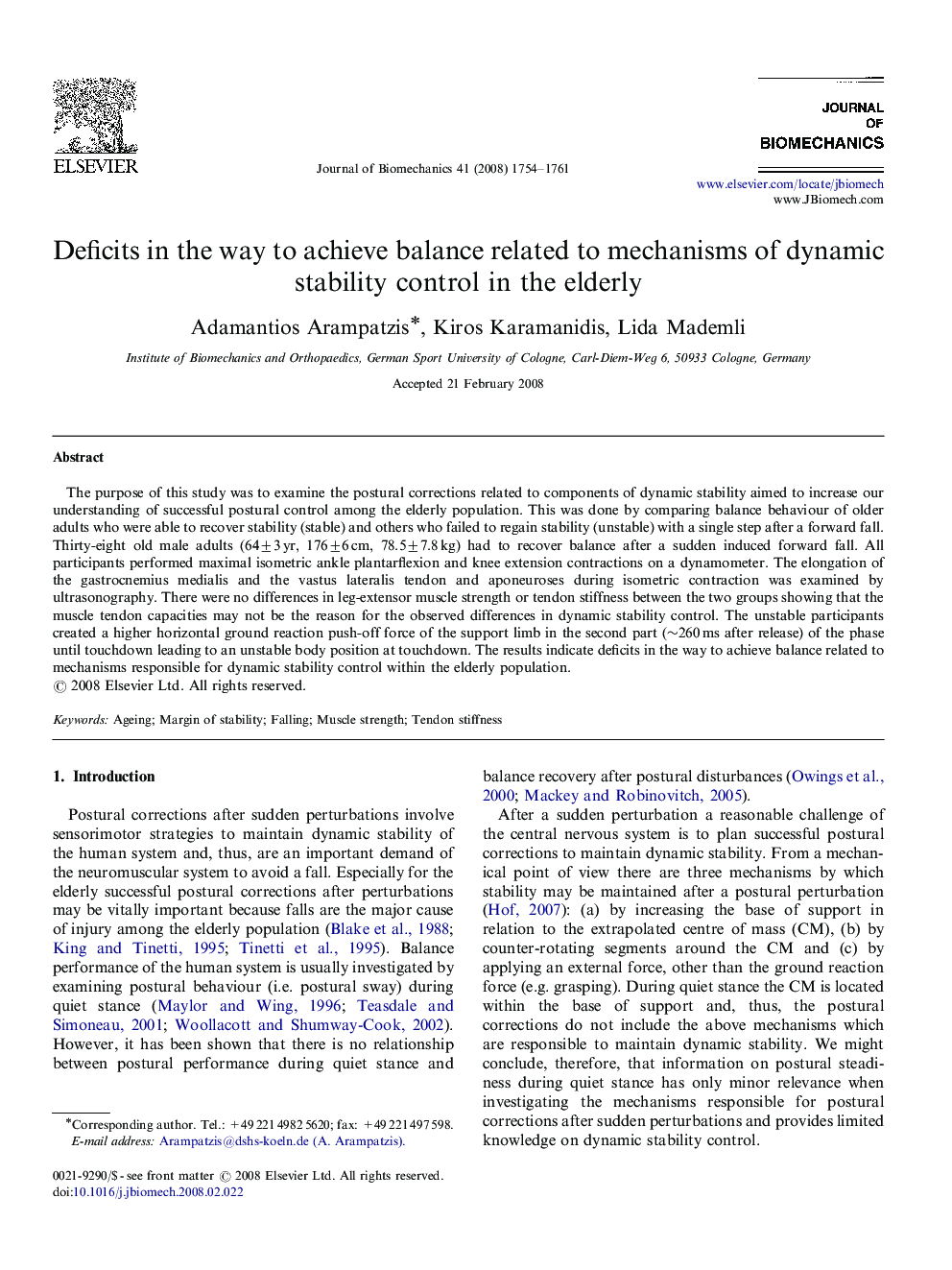| Article ID | Journal | Published Year | Pages | File Type |
|---|---|---|---|---|
| 873122 | Journal of Biomechanics | 2008 | 8 Pages |
The purpose of this study was to examine the postural corrections related to components of dynamic stability aimed to increase our understanding of successful postural control among the elderly population. This was done by comparing balance behaviour of older adults who were able to recover stability (stable) and others who failed to regain stability (unstable) with a single step after a forward fall. Thirty-eight old male adults (64±3 yr, 176±6 cm, 78.5±7.8 kg) had to recover balance after a sudden induced forward fall. All participants performed maximal isometric ankle plantarflexion and knee extension contractions on a dynamometer. The elongation of the gastrocnemius medialis and the vastus lateralis tendon and aponeuroses during isometric contraction was examined by ultrasonography. There were no differences in leg-extensor muscle strength or tendon stiffness between the two groups showing that the muscle tendon capacities may not be the reason for the observed differences in dynamic stability control. The unstable participants created a higher horizontal ground reaction push-off force of the support limb in the second part (∼260 ms after release) of the phase until touchdown leading to an unstable body position at touchdown. The results indicate deficits in the way to achieve balance related to mechanisms responsible for dynamic stability control within the elderly population.
